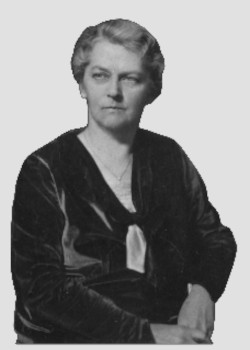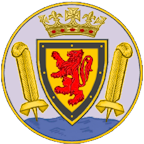Mary Rundle
 John
Peter Rundle, a tailor by trade, and his wife Mary (née Snell)
already had two sons (Mark and Claude) and were living at Sherwood Villa
in Culver Road when their third and last child Mary Snell Rundle was born
in 1874.
John
Peter Rundle, a tailor by trade, and his wife Mary (née Snell)
already had two sons (Mark and Claude) and were living at Sherwood Villa
in Culver Road when their third and last child Mary Snell Rundle was born
in 1874.
Mary was engaged to marry a naval officer, but her fiancé tragically died before their wedding day. Instead of looking for another potential husband, Mary (possibly inspired by her brother who was later to become Dr Claude Rundle MD OBE) decided to devote the rest of her life to nursing.
Mary moved to London to take nursing training at St Bartholomew's Hospital, where she was the first recipient of the Isla Stewart Scholarship. This funded a year of training in New York, which she took at Teacher's College, Columbia, in hospital economics and teaching in American nursing schools. While there, she gained a certificate in massage therapy.
After returning to the UK, Mary was appointed Assistant Matron under Rachael Cox-Davies at the Royal Free Hospital.
In 1912 Mary became Matron of the Royal Hospital for Diseases of the Chest, where she organised some of the first postgraduate courses for nurses on tuberculosis care and health visiting. She also set up her own nursing library.
From 1915 to 1916, during the First World War, Mary was Matron of the 1st London General Hospital Territorial Army Nursing Service, and in 1916 she received the Royal Red Cross for her war work. (Created in 1883 and first awarded to Florence Nightingale, the Royal Red Cross is a military decoration awarded in the United Kingdom and Commonwealth to a fully trained nurse of an officially recognised nursing service for exceptional services in military nursing.)
Meanwhile Sarah Swift, Matron-in-Chief of the British Red Cross Society, approached MP Arthur Stanley, the Society's Chairman, to support her in starting a College to help regulate the nursing profession, pursue educational goals, and protect the interests of nurses. The College of Nursing Ltd (now the Royal College of Nursing) was founded on the 27th of March 1916, with just 34 members. – Mary became the College's first Chief Executive and General Secretary and co-ordinated the College's early work in nursing education, employment rights and pastoral care for members.
Viscountess Cowdray, involved with fundraising for the endowment of the College of Nursing and the creation of a Benevolent Fund for Nurses, was inspired to found a social club for Nurses and Professional Women which "should provide a centre for intercourse and recreation and which should also furnish some of those creature comforts which we associate with the word 'Home'". To this end Lady Cowdray purchased 20 Cavendish Square, an eighteenth century townhouse, where she established the Nation's Nurses and Professional Women's Club Ltd (later the Cowdray Club) in 1922. – Mary was a founding member of the Club and served on its first council.
Mary was also Vice-President of the League of Nurses at St Bartholomew's Hospital.
In 1925 discussions began at London University to develop a nursing diploma. – Mary was on the advisory board, and was awarded the Diploma in Nursing (honoris causa) from Leeds University.
Some of Mary's most notable work for the College of Nursing was in nursing pensions, and she helped to bring in the Federated Superannuation Scheme for Nurses and Hospital Officers, launched in 1928.
Mary retired in 1935 due to ill-health, saying "A good beginning has been made. The College may look forward with courage and quiet confidence to further progress." She died at home just two years later.
The April 1937 British Journal of Nursing reported: "There died on March 13th 1937, at 33 St John’s Wood Road, NW8, Miss Mary Snell Rundle, RRC, DN (Leeds), first Secretary of the College of Nursing, London, deeply regretted by a large circle of friends. ... She retired from work some few years ago owing to ill health, but continued her interest in her profession until her somewhat sudden death. Her funeral, which took place on March 17th, was attended by those near and dear to her with whom she had worked for so many years."
page updated 2025-03-21
